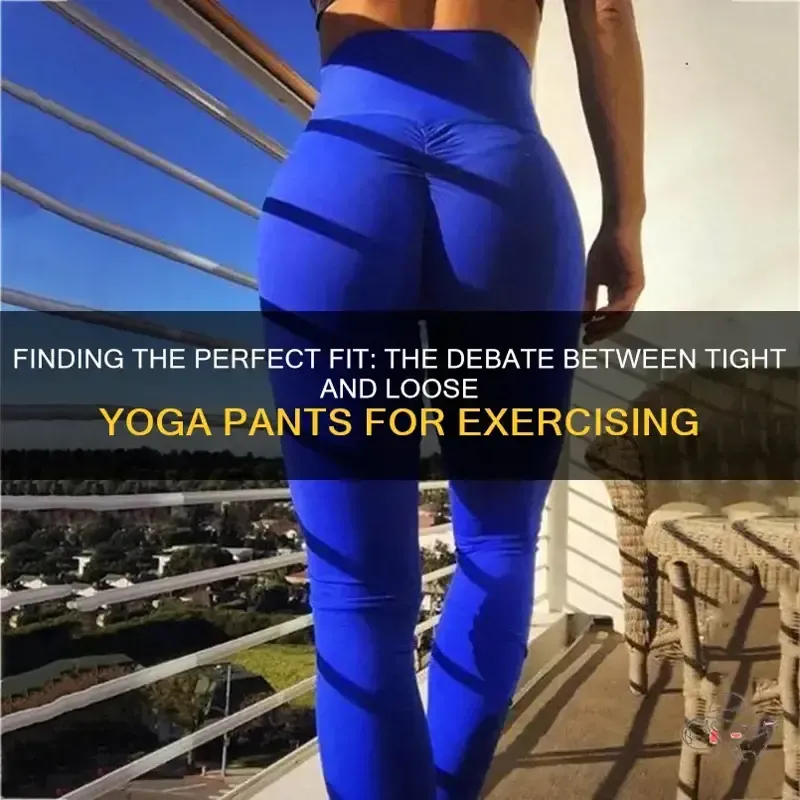Table of Contents
Walk into any yoga studio, and you'll see a kaleidoscope of legwear. Some folks look like they were shrink-wrapped, their pants clinging to every curve. Others resemble they just rolled out of bed in comfy sweats. This visual disparity brings up a question many ponder, often silently in the fitting room:should yoga pants be tight or loose? It seems straightforward, right? Just pick what feels good. Except, it's a bit more complicated than that.
Should Yoga Pants Be Tight or Loose? The Basics
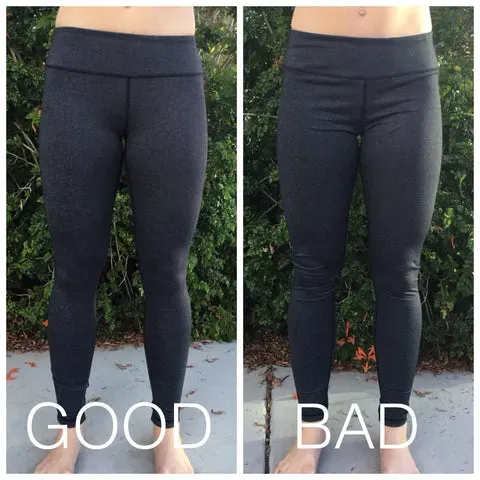
Should Yoga Pants Be Tight or Loose? The Basics
It's Not Just About Looking Good (Though That Helps)
Alright, let's cut through the noise. When you're asking yourselfShould Yoga Pants Be Tight or Loose? The Basicsboil down to function over fashion, mostly. Yes, social media might show perfectly sculpted humans in second-skin leggings, but that’s not the whole story. The primary job of your yoga pants is to let you move freely without distraction or restriction. If your pants are fighting you during a Warrior III or threatening to split during a deep squat, they're the wrong fit, regardless of how they look in the mirror.
Think about it: you're bending, twisting, folding, and sometimes even going upside down. Your clothing needs to keep up. Too loose, and you might trip, or fabric could get in the way of a pose. Too tight, and you feel constricted, like you're wearing a fashionable tourniquet. The sweet spot allows for a full range of motion, lets you see your limbs to check alignment (crucial for avoiding injuries, or at least blaming your pants when you wobble), and manages sweat without feeling like a plastic bag.
Consider Your Practice (And What Annoyances You Avoid)
The style of yoga you favor significantly impacts the tight-or-loose question. If you're into a dynamic, sweaty flow like Vinyasa or Ashtanga, a tighter fit often works better. Less flapping fabric to catch on your feet, less material bunching up when you transition quickly. Plus, many tighter pants offer some compression, which some folks find supportive, though the science on that for yoga is, shall we say, flexible.
On the flip side, for slower practices like Yin or Restorative, where you hold poses for extended periods and focus on deep stretches and relaxation, comfort reigns supreme. Baggy pants might feel more cozy and less restrictive when you're settling into a long pigeon pose or simply trying to breathe deeply without feeling squeezed. It really comes down to what allows you to forget about your clothes and focus on the actual practice.
So, when deciding, ask yourself:
- Does this allow my full range of motion?
- Can I see my knees and ankles to check alignment?
- Will excess fabric get in my way?
- Does it stay put when I move?
- Is it comfortable enough to wear for an hour or more of stretching and breathing?
Why Some Swear Their Yoga Pants Should Be Tight
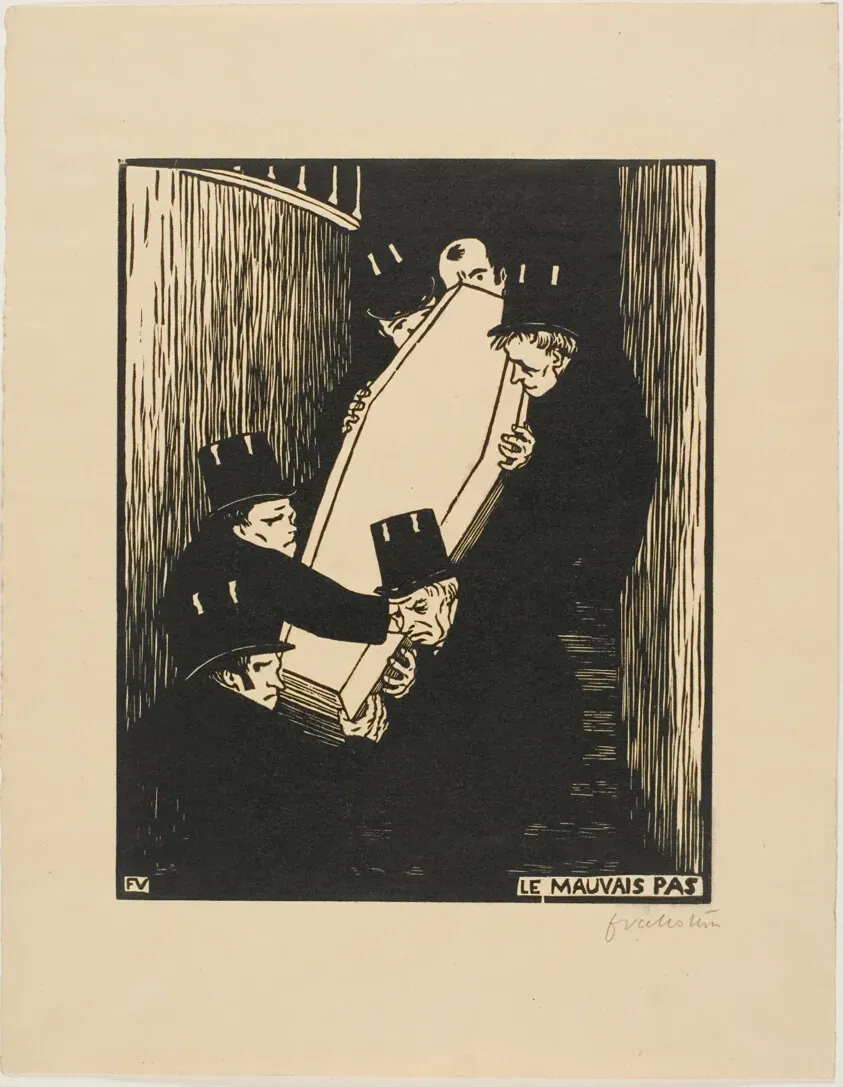
Why Some Swear Their Yoga Pants Should Be Tight
Seeing is Believing: Alignment Check 101
let's talk about why some people firmly believe their yoga pants should be tight. One of the biggest reasons is simple visibility. When your pants hug your legs, you can actually *see* what your knees, ankles, and hips are doing. This is crucial for checking your alignment in various poses. Is your front knee stacked directly over your ankle in Warrior II? Are your thighs rotating correctly in Downward Dog? Tight pants give you a clear visual feedback loop that baggy fabric just can't provide.
It's like trying to learn how to swing a golf club with a blanket draped over your arms. You can't see the mechanics. In yoga, especially for beginners or those working on refining their form, being able to observe how your limbs are positioned is invaluable. It helps prevent misalignment that could lead to strain or injury down the road. Plus, your instructor can better spot issues if they aren't trying to decipher your body shape through yards of loose fabric.
Feeling Secure and Supported: No Slipping or Sliding
Another key factor in the tight-pants camp is the feeling of security and support. Good quality, tight yoga pants often offer a degree of compression. While not everyone cares about compression, for some, it provides a feeling of being held or supported, particularly around the core and thighs. This can feel reassuring, especially during inversions or balancing poses where you want to feel stable and grounded.
Beyond compression, tight pants generally stay put. There's no constant need to hike them up, adjust the waistband, or worry about them riding down when you fold forward. This lack of fiddling is a major plus. When you're trying to focus on your breath and the pose, the last thing you need is your pants becoming a distraction. It allows you to flow more seamlessly and stay present on your mat without wardrobe malfunctions interrupting your zone.
Reasons people prefer tight yoga pants:
- Better visibility for checking alignment
- Instructor can more easily assess form
- Feeling of support or compression
- Pants stay in place during movement
- Less fabric to get tangled or tripped on
The Argument for Loose Yoga Pants
Maximum Comfort and Unrestricted Movement
so we've heard the case for tight pants. Now, let's talk about the rebels, the comfort connoisseurs, the folks who believeshould yoga pants be tight or looseleans firmly towards the latter. The most compelling argument for loose-fitting yoga pants? Pure, unadulterated comfort. Imagine slipping into something that feels like wearing pajamas but is socially acceptable outside your bedroom. That's the appeal. There's no waistband digging in, no fabric straining across your thighs in a deep lunge, just room to breathe and move.
For practices like Yin, Restorative, or even just gentle Hatha, where you're holding poses for longer durations or focusing on deep relaxation, tight pants can feel like a constraint. You want to soften, release, and surrender into the pose, not feel like you're being squeezed. Loose pants allow your limbs to extend fully without resistance from the fabric. They don't leave compression marks on your skin, which, while not a functional issue, is just plain annoying.
Breathability and Less Self-Consciousness
Another point in favor of the looser fit is breathability, especially if you're practicing in a warmer environment or just tend to run hot. While many technical fabrics are designed to wick sweat, having a bit of airflow doesn't hurt. Loose pants allow for better circulation around your legs, which can help keep you cooler and more comfortable during a longer session. Nobody enjoys feeling like their legs are simmering in their own personal sauna.
Beyond the physical, there's a psychological aspect. For some people, tight-fitting clothing, especially in a public setting like a yoga class, can bring up feelings of self-consciousness. Maybe they're worried about cellulite, or the outline of their underwear, or just feeling exposed. Loose pants offer a layer of modesty and privacy. You can focus on your practice without worrying about how your body looks in every pose. It removes one potential barrier to feeling completely at ease on your mat.
Why loose yoga pants might be your jam:
- Prioritizes comfort and relaxation
- Allows for deep stretches without restriction
- Better airflow and breathability
- Can feel less exposing and more private
- No annoying waistband pressure or digging
Different Yoga Styles: Should Yoga Pants Be Tight or Loose Here?
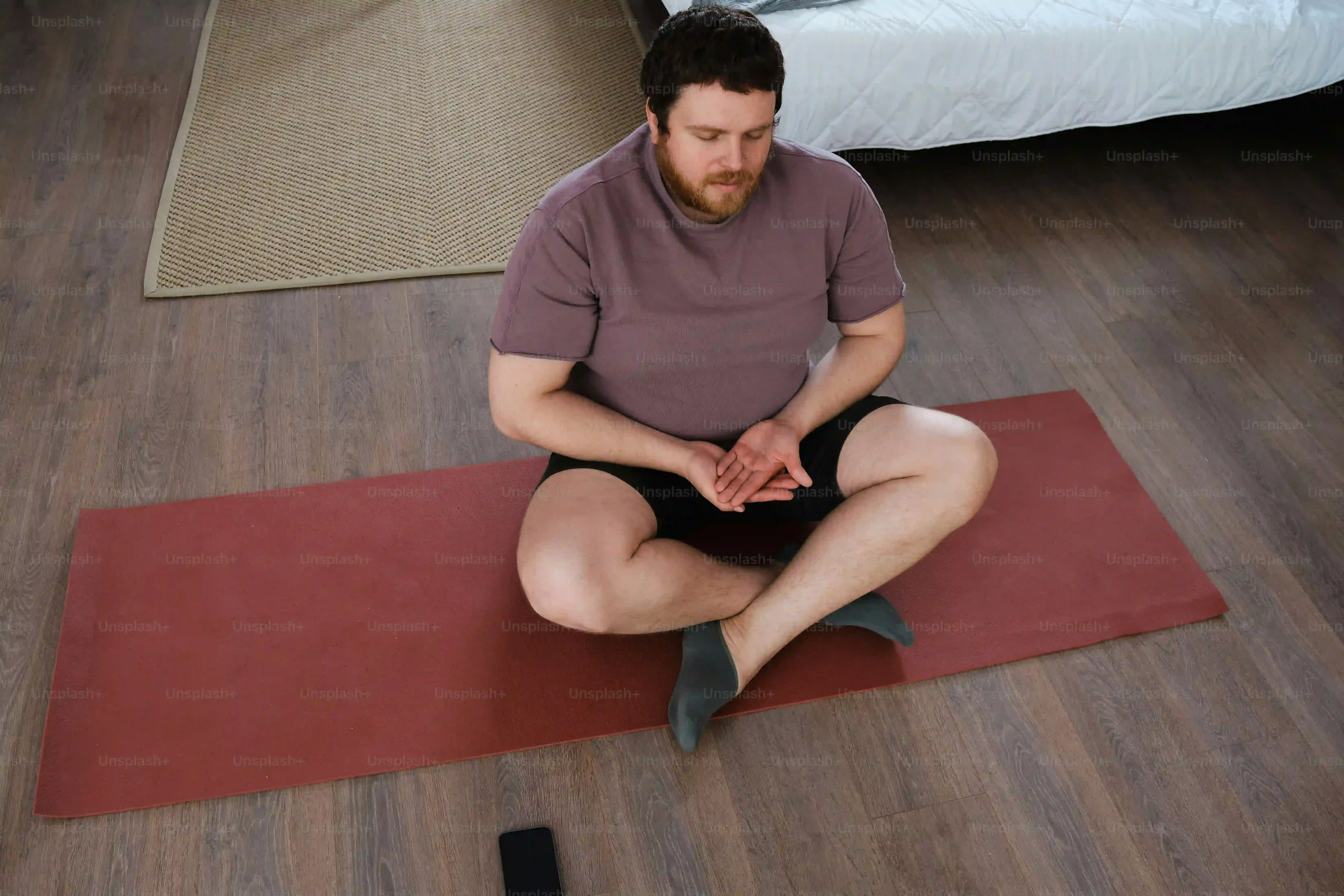
Different Yoga Styles: Should Yoga Pants Be Tight or Loose Here?
Finding the Fit for Your Flow
so we’ve talked general principles, but let’s get specific becauseDifferent Yoga Styles: Should Yoga Pants Be Tight or Loose Here?is where the rubber meets the road, or maybe the foot meets the mat. If you’re hitting up a hot yoga class, like Bikram or Hot Vinyasa, where sweat is practically a required prop, tighter, moisture-wicking pants are almost universally preferred. Less fabric means less soaking, faster drying, and frankly, less material sticking uncomfortably to your skin. Trying to do Triangle Pose in baggy sweats when it's 105 degrees and 40% humidity is an experience you probably don't want to repeat. On the other hand, if your jam is restorative yoga, where the goal is deep relaxation and passive stretching with props, constriction is the enemy. Loose, soft pants allow you to fully surrender into those long holds without any pressure points or digging waistbands.
Fit Recommendations by Yoga Style:
- Vinyasa/Ashtanga (Dynamic Flow): Generally prefer tight for visibility and no-snag movement.
- Hot Yoga (Bikram/Hot Vinyasa): Tight, moisture-wicking is key for managing sweat.
- Hatha/Gentle Yoga: Either tight or loose works; comfort is often the decider.
- Yin/Restorative (Slow, Deep Stretch): Loose is often preferred for maximum comfort and release.
- AcroYoga/Partner Yoga: Tight can be better for grip and ensuring clothing doesn't interfere with partnership.
Beyond Tight or Loose: Fabric, Feel, and Function
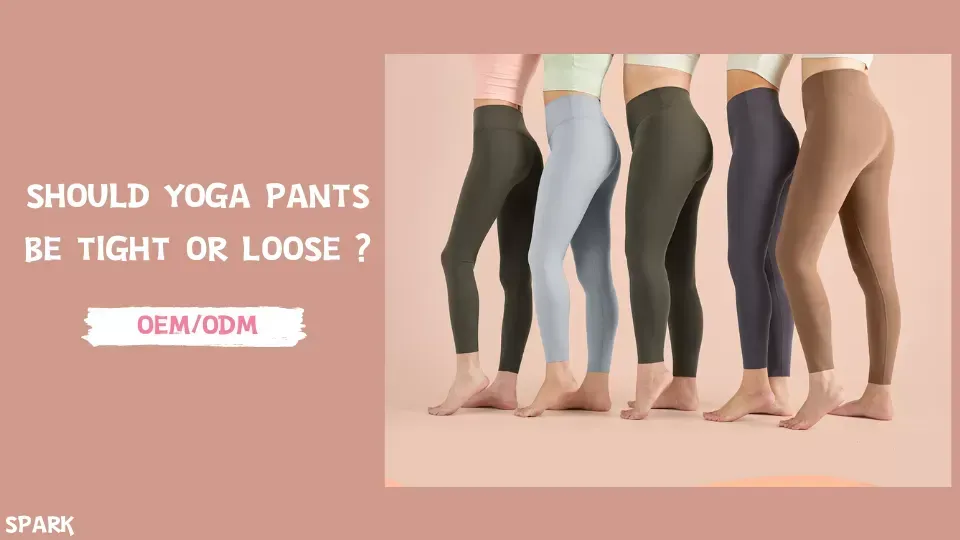
Beyond Tight or Loose: Fabric, Feel, and Function
Fabric First: It's Not Just Stretchy Stuff
so we've hashed out whethershould yoga pants be tight or loosebased on style and preference. But honestly, that's only half the battle. The material your pants are made of is arguably just as critical, if not more so, than the fit itself. Think of it like building a house – the blueprint (tight or loose) matters, but the quality of the lumber and foundation (the fabric) determines if it stands up or collapses. Most yoga pants blend synthetic fibers like nylon, polyester, and spandex (also known as Lycra). These aren't chosen randomly; they bring specific properties to the mat.
Nylon is tough and smooth, offering good durability. Polyester is fantastic at resisting wrinkles and, crucially, wicking away sweat, which is a non-negotiable if you dislike feeling soggy. Spandex is the magic ingredient providing that four-way stretch that lets you contort yourself into shapes you didn't think were possible. A good pair balances these, giving you stretch, sweat management, and resilience. A bad pair feels like wearing plastic wrap or sandpaper.
The "Feel" Factor: Comfort Beyond Measure
Beyond the technical specs of the fibers, there's the subjective "feel" of the fabric against your skin. This is where personal preference really kicks in. Some people love that super-soft, buttery feel – the kind that makes you want to live in your yoga pants. Others prefer something a bit more substantial or compressive. The texture can impact how the pants move with you, how they feel during long holds, and even how they handle moisture.
I once had a pair that felt amazing in the store, all soft and luxurious. Turns out, they held onto sweat like a sponge, turning my legs into mobile swamps halfway through class. Not ideal. Conversely, a slightly less soft but highly wicking fabric can make a world of difference in comfort during a sweaty session. Don't underestimate how the tactile experience influences your ability to focus and relax.
Common Yoga Pant Fabrics and Their Traits:
- Nylon: Durable, smooth, good stretch recovery.
- Polyester: Excellent moisture-wicking, wrinkle resistant, durable.
- Spandex (Lycra): Provides high stretch and flexibility, helps pants retain shape.
- Blends (e.g., Nylon/Spandex, Poly/Spandex): Combine properties for balanced performance.
- Cotton Blends: Soft but less wicking; better for gentle, non-sweaty practices.
Functionality: Waistbands, Seams, and Gussets
Finally, let's talk nuts and bolts – the functional design elements. A good waistband is crucial. It should be wide enough to stay put without digging in or rolling down. A narrow, flimsy waistband is a recipe for constant adjustment, which is infuriating when you're trying to hold a pose. Look for flatlock seams; these lie flat against the skin, reducing chafing, especially in areas with high friction. Raised seams can become incredibly irritating during repetitive movements or long holds.
A gusset, often a diamond or triangular piece of fabric sewn into the crotch, is non-negotiable for comfort and durability. It allows for a greater range of motion without stressing the seams in a high-wear area and prevents that awkward camel-toe situation nobody wants. Pockets are a bonus for some, useless for others – depends if you need somewhere to stash a key or just want a sleek line. These details might seem minor, but they significantly impact how the pants perform and feel over time, regardless of whether you decidedshould yoga pants be tight or loose.
Finding Your Yoga Pant Peace
So,should yoga pants be tight or loose? As we’ve explored, the answer isn't a simple one-size-fits-all dictum. The choice hinges on the type of yoga you practice, your personal comfort level, and what you need from your gear during movement. Tight pants can offer support and help you check your alignment, which is useful in poses requiring precise form. Loose pants, on the other hand, provide unrestricted movement and can feel more comfortable for slower, gentler practices or simply lounging. Ultimately, the most effective yoga pants are the ones you feel good moving in, allowing you to focus on your breath and practice rather than adjusting fabric.
